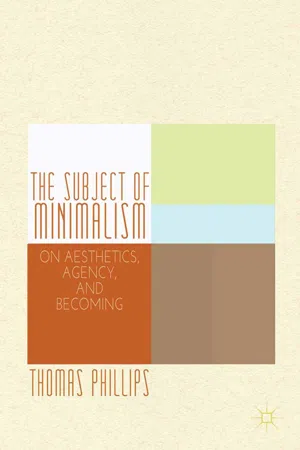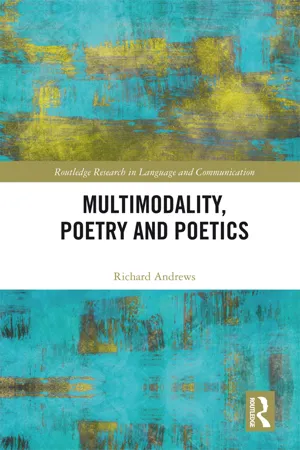Literature
Literary Minimalism
Literary minimalism is a writing style characterized by brevity, simplicity, and a focus on the essential elements of a story. It often features sparse prose, understated emotions, and a deliberate omission of details, allowing readers to fill in the gaps with their own interpretations. This style aims to convey profound meaning through economy of language and subtle storytelling techniques.
Written by Perlego with AI-assistance
4 Key excerpts on "Literary Minimalism"
- eBook - ePub
Hicks, Tribes, and Dirty Realists
American Fiction after Postmodernism
- Robert Rebein(Author)
- 2021(Publication Date)
- The University Press of Kentucky(Publisher)
13 Reading this description, it is easy to see why literary critics were drawn to Wollheim’s term. Much Literary Minimalism was remarkably similar in its lack of “differentiation”—so much so, in fact, that many readers complained of an inability to tell one minimalist’s work from another’s. Beyond this, there was the feeling that what the old-fashioned realists had called “milieu” had been replaced by brand names and other “surface details” that clearly came not from the individual artist but from a “nonartistic source”—the world of the television sitcom and the shopping mall, for example.At about the same time as literary critics began to take notice of minimalism, publishers discovered that story collections that were “high concept,” unified by a single theme, and, above all, easily digested in the time it took to ride the subway to work, were suddenly good risks for an industry that was having a hard time competing with other mass media. As writer and teacher Eve Shelnutt ran it down, “With what is called the ‘renaissance’ of American fiction post-1970, the publishing industry began to see, with minimalism in particular, a way to package American fiction almost the way New Journalism was being packaged: writing that talks about the way we live now, writing that appeals to a reader who spends a lot of time in front of the television.”14Midway into the 1980s, several writers attempted to step back and define the movement, often by way of attacking its techniques and the philosophical positions underpinning them. John Barth, writing in the New York Times - eBook - ePub
The Subject of Minimalism
On Aesthetics, Agency, and Becoming
- Thomas Phillips(Author)
- 2013(Publication Date)
- Palgrave Macmillan(Publisher)
now that dramatically rejects any possibility of narrative” (20). Here he is referring to musical minimalism, which accounts for a complete absence of narrative, but even in certain literary and filmic texts that cannot eschew narrative structure altogether, the holes exist, and time can be reduced to an “extended now” while nevertheless establishing a more or less cohesive account of events.Given my primary academic training in literary scholarship, fiction texts take up a considerable amount of space here, spanning three chapters. I’ve made an effort, however, to suggest links between these texts and those that follow, my hope being that the reader will note other points of intersection. These observations will become increasingly important when, by the study’s conclusion, the artistic text assumes the form of the reader himself or herself, when the aesthetic merges with the quotidian to such a degree that spectatorship, in its various forms, takes on the responsibility of what is potentially a life project, when subjectivity is revisited in the wake of postmodern exegesis. I attach importance to the nexus of aesthetic and what I will presently call body-centered practices because I believe both are enhanced in their meeting; the former insofar as spectatorship is elevated in precisely its physical immediacy (in relation to the text) and the latter to the degree that embodiment is enriched by the potential intelligence and refinement of creative expression. Conceptually, the study unfolds as what Gilles Deleuze and Felix Guattari might call a “mechanosphere” in which, in this case, theoretical, aesthetic, and somatic practices become “intertwined” and “convergent” (Thousand 514). Though the notion of a mechanized subjectivity requires interrogation (see chapter 8 - eBook - ePub
- Richard Andrews(Author)
- 2018(Publication Date)
- Routledge(Publisher)
10 A New Approach to Literary Study?Introduction
A multimodal perspective suggests that even in seeming monomodal literary texts, there is more than one mode at play. Conventionally, literary stylistics was the sub-discipline which dealt with form, style and language, almost totally from a linguistic perspective. A new approach to literary study has to take into account other implied and explicit modes in the composition and interpretation of texts. The implications for language-only approaches to text are clear: there is more going on in such texts than the purely linguistic and its referents. Even the ‘purely linguistic’ has a visual identity when it is printed on a page and when it is spoken or performed; there are questions of context, of the resonance of the speaker, of gesture and audience, as well as other factors in communication. The study of literature (and the making of literature) is thus seen as a choice among a range of possible modal choices—but one which carries legacies of the modes that are often ‘excluded’ from the work in question.Literary Stylistics
Literary stylistics has inhabited a space between literature on the one hand and linguistics on the other. Conventionally, as a sub-category of applied linguistics, it uses linguistic knowledge, categorization and methods to shed light on literary texts and their effects. The advantage of the liminal space it inhabits is that it has not been erected into a discipline, although it has formed the theme of many an academic book series. Writing from 2017, its history as a sub-category of applied linguistics in the practice of interpreting literary texts can reasonably be dated in the Anglo-American tradition from the 1940s (for example, Grierson 1949)—a history of some 70 years, marked by key writers such as Jakobsen (e.g. 1960) and Widdowson (e.g. 1975), although with precursors in Russian formalism, the Prague School and followers of Saussure in the first part of the twentieth century. A sub-sub-category of the field is that bound by an interest in poetic prosodies, which reached intensity in the 1920s in the wake of free verse practice and theories—themselves dating back to the vers libre and vers libéré - eBook - ePub
Unnoticed in the Casual Light of Day
Phillip Larkin and the Plain Style
- Tijana Stojkovic(Author)
- 2013(Publication Date)
- Routledge(Publisher)
We can here remember Miller’s criticism of Larkin from the beginning (see page 2), where Larkin is found to be too “undemanding” and thus not a poet but a versifier. The features characterizing this model of literature and distinguishing it from the social one can be summarized as: an assumption that literature deals with the reality of language, not of the world; an attempt to evade the conservatism of language used socially through opacity and ambiguity in literary texts; a loss of the concern for the reader. In a beautifully written chapter “Word against object” in his book After Babel, George Steiner telescopes all of the preceding debate into an opposition between the public and the private drives in human language. The drive towards clarity and consensus in language, he says, prevents “the disorder of Babel,” the chaos and autism which would follow from absence of public utterances (or, he adds carefully, those that can be treated as if they were public) (214, 215). The private, inward, drive, which makes use of the “messiness” of language, comes from our deeply human need to “state the thing which is not,” to gainsay the world, and to express personal intent (232). In designating a poem as “maximal speech” which circumvents traditional transparency and optimizes human linguistic invention (244), Steiner comes close to Bruns’ and Blanchot’s view which somehow separates poetry (and literature) from the public, social realm of language, which is the one foregrounded in the plain style. He, however, says something else in the same chapter, which is an excellent way of approaching and understanding the best examples of the plain style in literature: “Vital acts of speech are those which seek to make a fresh and ‘private’ content more publicly available without weakening the uniqueness, the felt edge of individual intent” (215)
Index pages curate the most relevant extracts from our library of academic textbooks. They’ve been created using an in-house natural language model (NLM), each adding context and meaning to key research topics.
Explore more topic indexes
Explore more topic indexes
1 of 6
Explore more topic indexes
1 of 4



